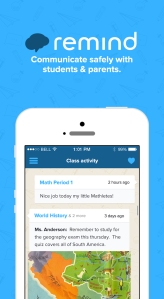 It is now exactly three weeks since the 2014/15 school year began. I have been teaching Computer Science/Programming for approximately 105 class periods now. Such are my views to this point:
It is now exactly three weeks since the 2014/15 school year began. I have been teaching Computer Science/Programming for approximately 105 class periods now. Such are my views to this point:
1. This is MUCH nicer than teaching Biology. I taught Biology, Chemistry, Physics, Astronomy, Aquatic Science, and Pre-AP Biology for 7 years. Each of those subjects is a required core that every student must slog through in order to graduate. I now teach electives. Imagine…most of my students are actually INTERESTED in the material. You can’t imagine what that does to the teaching process. Do we NEED to educate every student in ALL the sciences? Do they all need classical physics? Do they all need to know how to balance an equation? Does being able to do these things qualify us as educated? The more I am exposed to public education, the more I am convinced that we are doing it wrong. Texas has, for the past 20 or 30 years, been of the opinion that any person who left High School with any desire but to go to Harvard Med and become a brain surgeon was somehow defective. In the last year, House Bill 5 has been a HUGE step forward in education and a HUGE step away from that silly notion. Not every student is college material. <gasp> I know that is a 50’s stereotype and, in our ridiculously uber-PC world, considered tantamount to slander but it is the truth. The percentage of students passing from Freshman to Sophomore in a traditional four year university runs about 30 percent. 7 out of 10 kids go off to college, fail out or loose interest, and come home to the military, trade school, or McDonalds. (This does not hold true for schools like Harvard, Yale, Dartmouth, Columbia, Stanford, or other “ivy league” universities. These stats are attributed to the University of Texas at Austin and other Division I public colleges.) The percentage of students who survive from Sophomore to Junior, however, turns that statistic almost completely on its head. Meaning that most of the people who go off to college fail out but the ones who survive the first year are almost assured of graduating. It’s not the system or lack of preparation or even fluoride in drinking water, most of these kids are not able to handle the work load or just flat don’t have the interest in those fields of study. They didn’t have it in High School and they don’t develop it by going off to a four year college. On the other hand, many of those self-same college “failures” do extremely well in vo-tech training or some other none traditional path to education. Many of the best computer programmers in the gaming industry are self-taught. It’s not about being smart or dumb, it is about being interested in the material you are trying to learn. Nothing is more boring than listening to someone talk about something you have no interest in what so ever. Pedagogy tells us that we need to engage our students with awe inspiring lessons and snappy edu-tainment presentations to hold their attention. I believe we need to find their interests and educate them along those lines. Some people REALLY just want to fix cars. Some people like to build houses. Some people can install and repair home appliances and are good at it. I say we encourage them and train them to do what they like.
2. Spending priorities in public school are the cause of many of our budget issues. We spend an incredible amount of money on athletic stadiums, extracurricular activities, and programs that have little to nothing to do with education. A very small percentage of the yearly budget is actually spent in the classroom. I am not, in any way, anti-sports. I was an athlete for all of my public school years until I determined that I had more talent in music than sports and moved to band. These programs build character, encourage physical fitness (which we desperately need in America’s youth) and do all the Norman Rockwell clichés that you have heard for all your life. However, they are NOT, and should NOT be, the primary focus of education. Why then, are they the primary focus of our spending? Only about 300 players per year, of all the thousands of college football players in all the colleges in the US, make it to the NFL combine. A tiny fraction of those get chosen. The odds of even making it into college football are just a few thousand out of the millions of high players around the country, and yet the vast majority of money in a school budget goes to, at least in Texas, the football team. Stadiums that would rival most colleges are found in the tiniest of Single-A schools. Those same schools are having trouble keeping math, science, or vo-tech teachers because they don’t pay enough, and unlike coaches, math and science teachers don’t get stipends even though they spend many hours over40 per week doing the job. We also spend a large portion of the yearly budget on benevolence and support for under privileged and economically disadvantaged kids. I know… your heart bleeds for them every time you see one without a coat on a cold day but teachers are NOT parents. We should not try to take the place of parents. The argument runs that the student’s basic needs must be met in order to be able to excel at education but there are government agencies and departments geared to provide those things MUCH more efficiently than schools. We should let them do their job. THEY have the budget for it. We see a student in need and we IMMEDIATELY refer them to the proper agency in social welfare to handle those things. When the student’s environment is stable THEN they return to education. Given the ease at which on-line and distance education are becoming mainstream, it is unnecessary for them to even miss a class. Also, involving outside government agencies holds parents accountable. Once again…Teachers are NOT Mom and Dad. Parents need to be held responsible for the way they raise their kids.
3. (Let’s just see if I can offend EVERYONE tonight.) Teacher evaluation and accountability is critical. However, student performance should be the last thing we base it on. As was mentioned above, a great many students, at least at the High School level, are completely disinterested in the material being presented. It is nearly impossible to force a disinterested student to succeed. No two students are alike. No two classes of students are alike and yet we look at this year’s class and compare their scores to last years and the year before and expect to see a constant increase. I am sorry to inform you that, in spite of what you may have read in the Declaration of Independence, not all people are created equal. Bell curve distribution does not always hold true, especially in very small to medium sized schools. You have good years and bad years. It is unfair to the student as well as the teacher to expect this year’s freshman to perform at a higher level than last year’s crop and yet that is exactly how we judge education. If we are going to continue in this manner then I propose we start an evaluation system for lawmakers as well. We can judge them on the yearly performance of major economic indicators like the GNP or the unemployment rate in their area. If the economy does not get better every year then they need to be retrained…oops how silly of me…lawmakers require no special training. They just need to be popular. Hmmm I wonder what is wrong with that picture??
 Just came back from a great time at TCEA presenting Arduino to some of the best teachers in the state. We covered the basics of circuit design and building withe a bread-board. We learned the fundamentals of making an Arduino sketch and the basic syntax for coding. The people who shared my class were the absolute best. They got it. They could see how using this type of technology in a classroom might inspire a student to pursue a career and find a satisfying path in life. What else matters?
Just came back from a great time at TCEA presenting Arduino to some of the best teachers in the state. We covered the basics of circuit design and building withe a bread-board. We learned the fundamentals of making an Arduino sketch and the basic syntax for coding. The people who shared my class were the absolute best. They got it. They could see how using this type of technology in a classroom might inspire a student to pursue a career and find a satisfying path in life. What else matters? During this edition of Technology in Education I will demonstrate the easiest method (that I know of anyhow) to integrate video into Canvas pages. This technique will work with YouTube, Microsoft SharePoint, or any other video hosting service that allows embedding via the iframe tag. Once again we will be using the HTML editor.First we need to select the video we wish to embed into the page we are editing. On YouTube, videos that are available for embedding, as most are, will have a link to create the embed code for you. You will merely need to copy this code and paste it into the html already in your page. If we wish to include this video from OnRamps, for example, we first need to find it on YouTube…
During this edition of Technology in Education I will demonstrate the easiest method (that I know of anyhow) to integrate video into Canvas pages. This technique will work with YouTube, Microsoft SharePoint, or any other video hosting service that allows embedding via the iframe tag. Once again we will be using the HTML editor.First we need to select the video we wish to embed into the page we are editing. On YouTube, videos that are available for embedding, as most are, will have a link to create the embed code for you. You will merely need to copy this code and paste it into the html already in your page. If we wish to include this video from OnRamps, for example, we first need to find it on YouTube…
 As you can see, the “Share” link is marked with a curved arrow and the word “Share”.
As you can see, the “Share” link is marked with a curved arrow and the word “Share”.



 I just got in from unpacking the car after an exhausting and thrilling week at TCEA’s state-wide convention in Austin, TX and now I have a moment to pause and sort out my thoughts before I go take a nap. (As you might suspect, this will be a short post. I really need the nap.)
I just got in from unpacking the car after an exhausting and thrilling week at TCEA’s state-wide convention in Austin, TX and now I have a moment to pause and sort out my thoughts before I go take a nap. (As you might suspect, this will be a short post. I really need the nap.)



 Ok…so I’m not a poet. Part of the Fundamentals of Engineering and Technology will include an introduction to Linux and all things Penguin. I have several systems running Debian which, to my limited experience, seems to be the most stable and easiest to get started with, Linux distro. (There again…IMHO). The question before the committee tonight is…Does the Raspberry Pi have any place in education? I have one. It’s hooked up to my TV set so when I feel the need to investigate something or am suddenly inspired to write Python code during Duck Dynasty (I know…but it COULD happen) I can just change inputs and there in Linux and the Internet and everything I could want. The issue I am having as far as introducing it into the educational mix is that basically, the performance is not all that great. It is what it is. A tiny system with very little RAM and precious little space. I’m not sure I want my students seeing that as Linux. First impressions being what they are I think I want my kids to see a real Linux desktop first. Does anyone else think that the Pi is basically a curiosity? I know it was designed with education in mind and would certainly be a cheap alternative if you had a Python class you had to run on the cheap but it is just NOT fast. Once again…it is what it is. I view it as more of a curiosity. I intended to pull it into my robot making hobby as a replacement or supplement for my various PIC/Arduino/Netduinos but another drawback to the system is that it requires MUCH more power to run, especially if you use the wireless USB network adapter. You have to have a powered hub etc. All in all, not that useful for a robot if you don’t want it tethered with an extension cord. Just curious to see if anyone else is using these little guys for anything beyond just having a tiny little slightly slow Linux system around. On the plus side, it is a real live Linux distro with a terminal that uses SUDO and all the other commands. I really want these guys to get the idea that there are other things in the world besides Windows so maybe, as a curiosity, the Pi will fill the bill. It is interesting and unique looking, especially in the snappy pink/purple case I have it in with all the LEDs going. At this point in their IT careers, these guys need to have their interest piqued more than anything else. I have to keep them interested to keep them moving forward in Computer Science. Well…I am going to try using it anyhow. Wish me luck. Of course comments and suggestions are always welcome.
Ok…so I’m not a poet. Part of the Fundamentals of Engineering and Technology will include an introduction to Linux and all things Penguin. I have several systems running Debian which, to my limited experience, seems to be the most stable and easiest to get started with, Linux distro. (There again…IMHO). The question before the committee tonight is…Does the Raspberry Pi have any place in education? I have one. It’s hooked up to my TV set so when I feel the need to investigate something or am suddenly inspired to write Python code during Duck Dynasty (I know…but it COULD happen) I can just change inputs and there in Linux and the Internet and everything I could want. The issue I am having as far as introducing it into the educational mix is that basically, the performance is not all that great. It is what it is. A tiny system with very little RAM and precious little space. I’m not sure I want my students seeing that as Linux. First impressions being what they are I think I want my kids to see a real Linux desktop first. Does anyone else think that the Pi is basically a curiosity? I know it was designed with education in mind and would certainly be a cheap alternative if you had a Python class you had to run on the cheap but it is just NOT fast. Once again…it is what it is. I view it as more of a curiosity. I intended to pull it into my robot making hobby as a replacement or supplement for my various PIC/Arduino/Netduinos but another drawback to the system is that it requires MUCH more power to run, especially if you use the wireless USB network adapter. You have to have a powered hub etc. All in all, not that useful for a robot if you don’t want it tethered with an extension cord. Just curious to see if anyone else is using these little guys for anything beyond just having a tiny little slightly slow Linux system around. On the plus side, it is a real live Linux distro with a terminal that uses SUDO and all the other commands. I really want these guys to get the idea that there are other things in the world besides Windows so maybe, as a curiosity, the Pi will fill the bill. It is interesting and unique looking, especially in the snappy pink/purple case I have it in with all the LEDs going. At this point in their IT careers, these guys need to have their interest piqued more than anything else. I have to keep them interested to keep them moving forward in Computer Science. Well…I am going to try using it anyhow. Wish me luck. Of course comments and suggestions are always welcome.